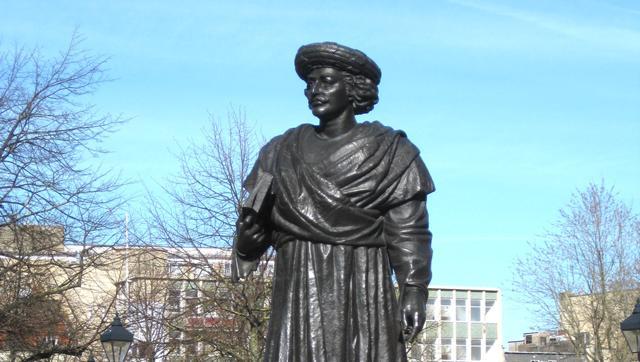
Tagore called him the man who inaugurated the modern age in India. Of all the personalities who ushered in Bengal renaissance, Rammohun Roy (1772-1833) was one of the tallest. A hunt is about to begin for bringing back the priceless historical documents related to the father of Bengal renaissance Raja Rammohun Roy including manuscripts and personal belongings much of which are lost, fell into the hands of treasure looters while a few remain scattered in various parts of the country and abroad.
Sachindra Nath Bhattacharya, the director of Raja Rammohun Roy Memorial Museum set up in 2000 to conserve his works told HT, the move to recover original documents was triggered by the discovery that many fake documents are stored in some archives in the country.
The museum is run by a trust.
“There is an urgent need to preserve the documents and rare manuscripts of Rammohun Roy that are lying in various universities and archives across Benares, Patna, New Delhi and the UK. We want to bring back all his original documents, including complete written works, documents related to the Sati movement, his dress, head gear and store in our museum for posterity,” Bhattacharya told HT.
“We’re in a hurry as many documents are already missing. We want to recover the remaining ones before they fall into the hands of treasure thieves. We’ll also approach the British Library which stores many documents of Rammohun Roy,” He added.
Bhattacharya has approached the union culture ministry for the project.
A research team would scout through schools registries in Patna, Sanskrit University in Benares and President’s House in New Delhi once the process gets a green signal from the government.
The Treasure Trove Act, 1878 and Antiquity Registration Act, 1972 empower the Centre to initiate legal processes to collect these documents from anywhere.

The museum authorities have sought President Pranab Mukherjee and chief minister Mamata Banerjee’s help so that a ‘territorial policy’ is framed under which documents related to a particular museum must be kept in its custody.
The authorities will attempt to unravel many unknown facts regarding his sudden voyage from Midnapore’s Khejuri port in a Albanian ship to Britain, his vital interactions with Dwarakanath Thakur (1794-1846) and other Atmiya Sabha and Brahmo Samaj members, close door discussion with Lord William Bentinck, David Hare and debate with William Carey through the collection of original documents spread across several places.
“We’ll visit all the places across the country where Sati was prevalent in Punjab, Rajasthan to West Bengal. We have already gathered vital information regarding exact numbers of women, including Muslim women, who became sati.
Soon, a drive will begin to collect all legal documents related to the Sati custom and its abolition.
We’ll also try to scout for details of his correspondence regarding introduction of allopathic medicine to the country,” said Bhattacharya.
An attempt will be made to collect documents regarding his pioneering works of Indian journalism such as publication of Sambad Kaumudi (Bengali weekly newspaper), Mirat-ul-Akbar (Persian journal) and Tuhfat al-Muwahhiddīn (Persian book on monotheism).
In 1828, Roy set up Brahmo Sabha that was the precursor to Brahmo Samaj, one of the most prominent socio-religious reform movements of Bengal.
source: http://www.hindustantimes.com/ Hindustan Times / Home / by Atonyu Choudhurri, Hindustan Times,Kolkata / August 20th, 2016